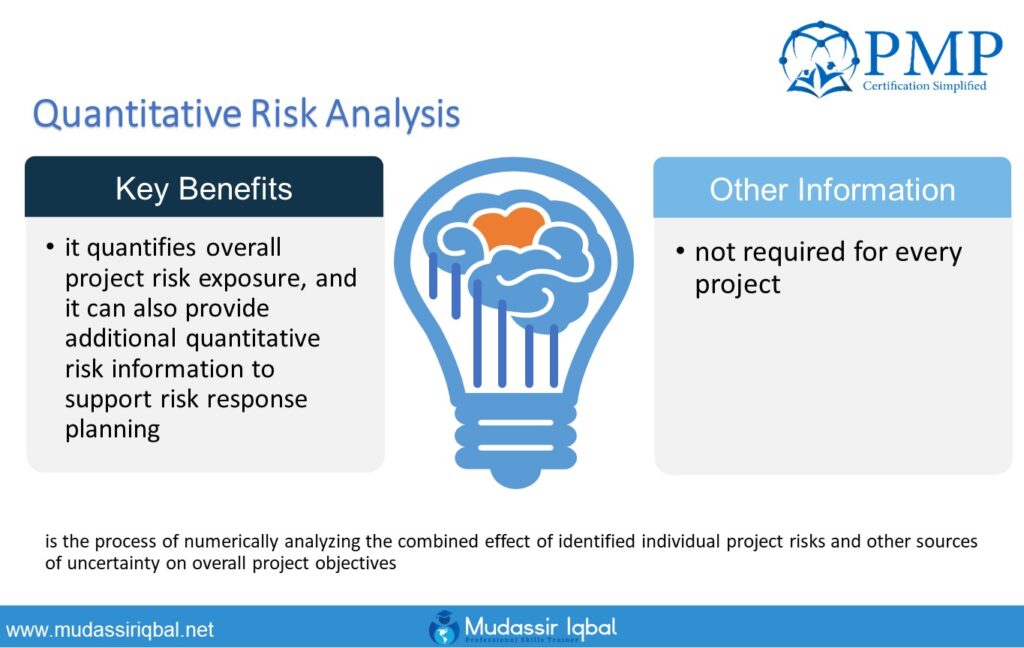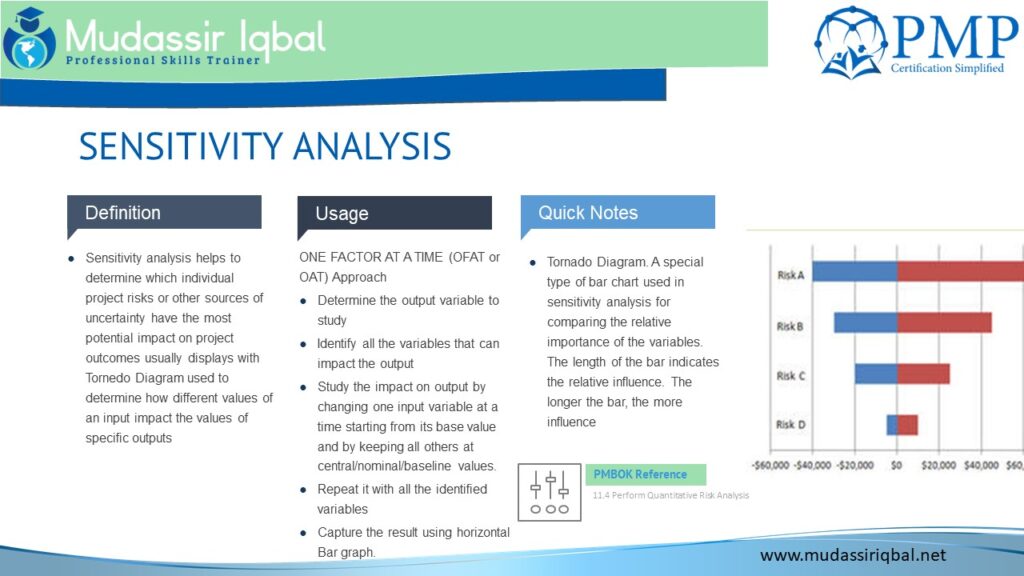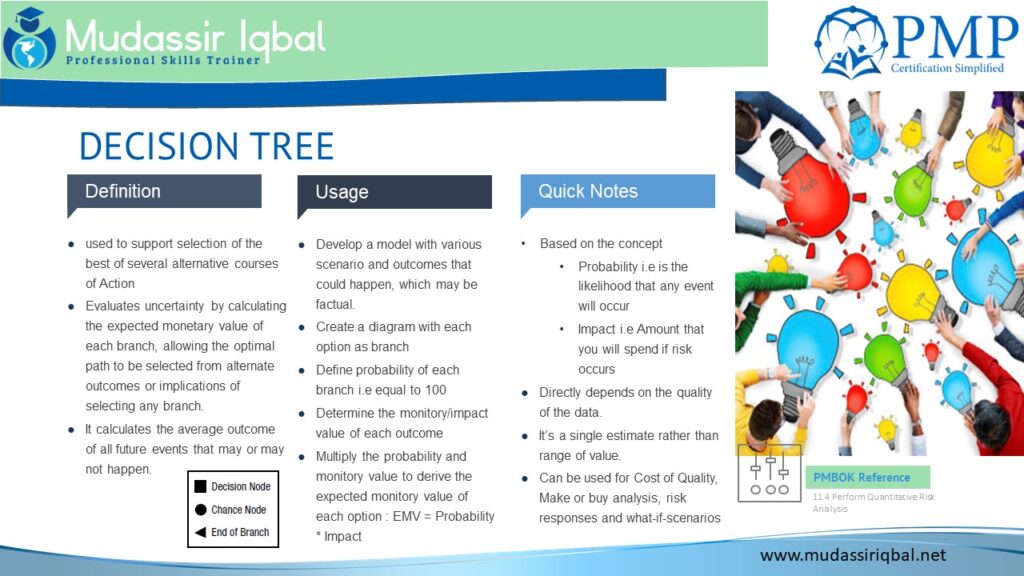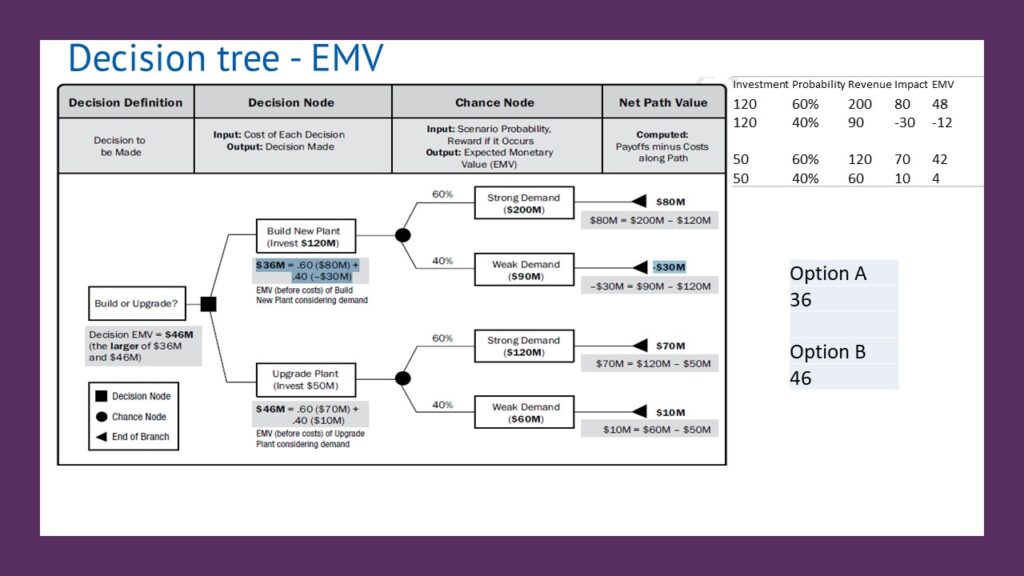Quantitative risk analysis is a process of evaluating the potential impact of uncertain events on a project or business. It involves the use of mathematical models and statistical techniques to estimate the likelihood and potential consequences of different risks.
The goal of quantitative risk analysis is to identify and prioritize the most significant risks so that appropriate mitigation strategies can be developed.

Tools to be used Quantitative Analysis
There are several tools and methodologies that can be used for quantitative risk analysis, including:
- Monte Carlo simulation is a statistical method used to estimate the probability of completing a project within given constraints by generating random samples of variables and simulating outcomes. It is used in project management as a risk analysis tool to identify potential problems and make informed decisions.
- Decision trees: This is a graphical representation of possible outcomes and the likelihood of each outcome based on different decisions or actions.
- Fault tree analysis: This is a top-down approach that models the various events and conditions that could lead to a specific failure or accident.
- Event tree analysis: This is a bottom-up approach that models the consequences of a specific initiating event and the likelihood of different outcomes.
- Sensitivity analysis: This involves varying the input parameters of a model to see how the results change.
- Scenario analysis: This involves creating different hypothetical scenarios based on different assumptions and evaluating the potential outcomes.
- Statistical analysis: This involves using statistical methods to analyze data and make predictions about future events.
- Risk matrix: This is a graphical representation of risks and their likelihood and impact.
- PERT (Program Evaluation and Review Technique) and Gantt chart: These tools can help with project management and scheduling.
These tools can be used separately or in combination to conduct a comprehensive quantitative risk analysis.
Sensitivity analysis
is a method used to evaluate how the uncertainty in the inputs of a model affects the outputs. It involves varying the input parameters of a model within a certain range and observing how the results change. The goal of sensitivity analysis is to identify which input parameters are most important for the outcome of the model and to determine the range of input values that result in acceptable outcomes.

A Decision tree
is a type of supervised learning algorithm that is primarily used for classification and regression tasks. It is a tree-like structure, with each internal node representing a feature or attribute, and each leaf node representing a class or value. The decision tree algorithm works by recursively partitioning the data based on the feature that provides the most information gain. The goal is to create a model that can accurately predict the class or value of new data points based on the features they possess. Decision trees are commonly used in machine learning, data mining, and statistics, and are also a popular tool in business intelligence and decision analysis.

Decision Tree Analysis Example for Quantitative Analysis

Expected Monetary Value (EMV) is a statistical technique in risk management that is used to quantify the risks, which in turn, assists the project manager to calculate the contingency reserve.
- It helps in calculating the amount required to manage all identified risks.
- It helps in selecting the choice which involves less money to manage the risks.
Expected Monetary Value (EMV) = Probability * Impact
If you have multiple risks, you will calculate the EMV of those risks separately and add them all.
A few benefits of using EMV are as follows:
It gives you an average outcome of all identified uncertain events.
It helps you select the best decision with a backup of objective data.
It helps you calculate the contingency reserve.
It helps you with a make or buy decision during the procurement planning process.
Monte Carlo Simulation
• It is a technique to emulate project activities (examples: scheduling of activities, estimating project cost).
• It is a technique that is carried out numerous times (hundreds or thousands of iterations) to understand the variability of a process and quantify it.
• It is a method where outcomes of events are determined with the use of random number subject to allocated probabilities.
This uses random sampling to model the likelihood of different outcomes based on a set of uncertain variables. The Monte Carlo method is used in a wide range of fields, including finance, physics, engineering, and computer science.
The basic idea behind Monte Carlo simulation is to use random sampling to estimate the value of a complex mathematical expression that is difficult or impossible to solve analytically. It is often used as a risk analysis tool to help project managers identify potential problems and mitigate risks.
Example of Monte Carlo Simulation
An example could be in construction, a project manager might use Monte Carlo simulation to estimate the probability of a construction project being completed within a specific deadline, taking into account the uncertainty in the duration of tasks, availability of resources, and weather conditions. They would input the duration of tasks, resource availability and weather conditions and their associated probability distributions, into the simulation. The simulation would then generate a large number of possible project timelines based on the random samples of the input variables.
The results would look something like this:
- 12% chance of completing the project in 12 months (if every task is finished by the optimistic timeline)
- 15% chance of completion within 13 months
- 55% chance of completion within 14 months
- 95% chance of completion within 15 months
- 100% chance of completion within 16 months (If everything takes as long as the pessimistic estimates)
The project manager can then analyze the results to determine the likelihood of the project being completed on time.

